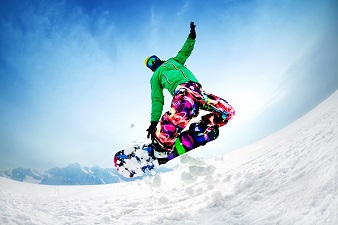Ski resorts get a lift from better snow guns

Related topics
Innovation SMEs Industrial Leadership Innovation in SMEs Austria Germany Italy Switzerlanddate: 11/12/2015
Project: Snow generation with reduced energy cons...
acronym: ECOARTISNOW
See also: CORDIS
A new snow-gun prototype and nozzle design developed during the EcoArtiSnow project uses 15% less energy, produces 8% more snow, and makes much less noise. The project partners developed this system to ensure wider take-up of artificial snow-making, which is of vital and growing importance to winter tourist destinations in Europe and around the world. The prototype was tested in the Italian Alps, and the technology is today promising.
More snow, less noise
The project was coordinated by Mike Blicker of the Fraunhofer Gesellschaft. Blicker’s team built on the know-how of DemacLenko, the world leader in snow-making equipment, to develop analytical models of the snow-making process. The models focused in particular on the nozzles where water and compressed air are combined and ice crystals are nucleated. Of particular research interest were the nozzle geometry and the correlated particle sizes, to ensure that a high-quality snow cover could be produced for less energy over a broad range of ambient temperatures and humidity.
However, the main contributor to energy consumption and noise levels is the air blower, which the team of Profactor GmbH analysed and optimised, together with the project partners, to reduce noise emission and energy use substantially.
“As a result of our research, we have managed to reduce energy consumption by between 15-25% depending on the ambient temperature and humidity levels,” explains Blicker. “We have also reduced noise emissions by some 5dB, especially in the higher frequencies that are most troublesome to the human ear, making the machines 25% quieter. Taken together, this means that snow-making machines can be used more energy efficiently, in a wider range of situations and closer to human and wildlife habitats – which represents a successful step forward for this sector.”
Obstacles on the slopes
Warmer winters with less snow can disrupt tourism and reduce the length of the tourist season, and this at a time when demand for skiing holidays is rising. This poses a serious economic problem for mountain communities, where winter sports may be the main source of income and employment.
For many years, snow-making equipment has been used to ensure that the ski slopes can operate. Indeed in some regions, such as the South Tyrol, some 90% of ski-slopes are now covered using artificial snow. However, there are barriers to the wider take-up of this technology, as Blicker explains: “Standard snow-making blowers and guns use a lot of expensive energy and are very noisy. These factors have prevented some ski facilities from using them where ski slopes are too close to residential areas and noise levels are too high.”
Where ski slopes are close to nature reserves and protected habitats, there are also strict environmental restrictions on noise levels. “For this reason, there was a demand for more efficient, quieter snow-making equipment which could be deployed in sensitive locations and ensure that high-quality snow is produced – leading to clear economic benefits for local communities,” says Blicker.
The project partners included the Fraunhofer Institute in Germany and Profactor GmbH from Austria, as well as the most important supply chain members and customers of DemacLenko Srl. The EcoArtiSnow prototype demonstration event in the 2013/2014 winter season is now being followed by wider field testing of improved machines.
Prototype snow-gun testing and snow quality evaluation
© Fraunhofer IGB, Boris Linke
Analysing spray behaviour and noise emissions of a snow gun
© Fraunhofer IGB, Boris Linke
